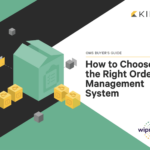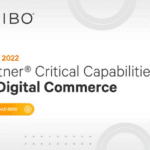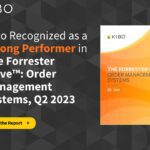Retailers have been undergoing, or talking about undergoing, a digital transformation for the past 5-7 years. The continued rise in online sales has heightened consumer expectations around what interacting with a retailer can and should be. The pandemic only strengthened the need for retailers to not only react to these shifting customer demands but also to seek out efficiencies across all of their shopping channels.
This article by Retail Consulting Partners (RCP) seeks to answer: what does digital transformation look like in 2023 and beyond, what are the key trends driving the customer experience, and how should retailers go about effectively selecting the right digital transformation approach.
Defining Digital Transformation in 2023
In short, digital transformation in retail is the increased adoption of technology to improve the customer experience, increase efficiency, and reduce overall operating costs. From a customer experience standpoint, it’s about providing the ability to: browse, buy, and return anywhere, identify and personalize the shopping experience across channels, and flexibly fulfill and deliver product orders as the customer wants.
Digital transformation for retailers used to be more about achieving an omnichannel experience for their customers via disparate in-store POS, eCommerce, and order management solutions; however, this led to challenges behind the scenes due to the patchwork of one-off integrations, duplicative sets of data, and manual business processes.
The pandemic further exposed these challenges at many retailers who were suddenly forced to scale up omni-transactions. Despite their efforts to provide a consistent experience, most omnichannel retailers ended up ultimately frustrating their customers via conflicting inventory availability, differing promotional offerings, and not being able to acknowledge and leverage past purchase history regardless of the shopping channel.
Digital transformation is now about implementing a unified commerce architecture to deliver on the promise and efficiencies originally idealized for omnichannel retail by providing a common, centralized, real-time platform for all customer engagement points. Through the use of open integration standards and microservices technology, these modern platforms can more effectively scale and more quickly add capabilities than traditional, legacy approaches.
For those retailers who have begun heading down the path of unified commerce, they can more effectively tackle some of the most pressing customer experience opportunities: relevant shopping experiences, retail self-service, and flexible fulfillment.
Another way retailers can implement a more effective in-store customer experience is through the use of self-service capabilities. These can be available either through a customer’s mobile device, associate mobile device, or via in-store kiosk/terminal and should leverage the same unified commerce platform with a customer-friendly user interface. Functions might include: helping a customer access a broader catalog of available products; conducting a special order transaction; looking up more detailed product information or review; or simply signing up/viewing their loyalty information.
A final leading trend in digital transformation customer experience is actually one that has been a priority for the past 3-4 years: flexible and frictionless fulfillment. In fact, 60% of retailers cited reducing friction between digital sales and fulfillment as the top customer engagement priority in our recent Customer Engagement Survey Report. It remains a trend primarily due to the ever-shifting demands of consumers for how they prefer to receive their product and what they’re willing to pay (in either dollars or loyalty) for their convenience preference.
Ultimately, retailers must be flexible enough to support fulfillment in any fashion. Still, it has only been recently with the advent of a real-time view into cross-channel inventory that retailers can do this in a cost-effective and efficient manner. In addition to up-to-date and accurate inventory visibility, retailers must also be transparent in other regards to continue to earn the trust of their valuable customers. This includes transparency around shipping fees, shipping timelines, order updates, and order-related communications.
Shipping from DCs, shipping from stores, drop-shipping, BOPIS, etc., are just some of the ways today’s customer wants to obtain their product – all depending on their choice of timing, cost, and behavior. Unified commerce platforms which seamlessly integrate inventory availability with advanced order orchestration allow the retailer to decide how to best present options that minimize their own costs (packaging, shipping, store labor, etc.), while also not disappointing the customer due to out-of-stocks, item replacements, or fulfillment delays due to outdated data.
Selecting the Right Digital Transformation Approach
Dozens of high-profile missteps by retailers every year serve to highlight the criticality of selecting the right strategy and approach toward digital transformation. As RCP, and any other management consulting firm, will state: there is simply no one-size-fits-all roadmap towards successful digital transformation.
Each retailer has their own unique customers, product mix, channel strategy, revenue goals, and business strategy. All of these need to serve as inputs into defining what the to-be customer journey should look like for their shoppers. Once the future state customer experience is defined, retailers can start laying out a path for how they want to most effectively migrate from today’s systems and processes. More often than not, this will involve the evaluation and selection of new technology solutions, and there are key considerations retailers should make when undertaking these efforts.
First, it’s essential that all impacted groups are involved in the evaluation process. These efforts cannot be driven solely by the Information Technology department, and they cannot be driven solely by a single business unit department. There is often a primary sponsor for the given technology tool, but multiple organizations should have input into the requirements and evaluation for the new system. This will help ensure if the right evaluation criteria are being used and aid in the eventual acceptance of the solution as part of the implementation.
Next, it’s critical that organizations look not just at the software acquisition costs or a monthly SaaS fee when evaluating a new technology solution. Understanding the Total Cost of Ownership (TCO) helps organizations anticipate all related costs associated with implementing, operating, and supporting the new solution, whether they come from the technology provider, additionally required 3rd parties, or even internal cost centers. In today’s retail economy, every investment is being carefully reviewed by executive teams, and having a well-constructed TCO model will help them to make the right decision.
Finally, a key consideration that many retailers need to consider during a technology selection initiative is the amount of change management required to implement and operate the new solution. Business processes are almost always impacted by using a new technology tool, and it’s critical to understand those changes to ensure resources are properly trained to accommodate. Often, supporting roles in both business units and IT might change as technology helps automate previously manual tasks, and there will be apprehension by long-standing employees to adopt to these changes. The proper change management strategy helps to anticipate these concerns and lay out a communication and training plan to most effectively position resources for the future state environment.
Conclusion
Today’s modern consumers demand that retailers support the many ways in which they want to browse, order, purchase, and return items, and they expect this to be a relatively seamless and frictionless experience. As a result, successful retailers continue to seek to implement a unified commerce approach to their digital transformation efforts and make the right strategic choices when selecting new technology solutions.

Is it time for a dedicated order management system?

Get a complimentary copy of the August 2022 Gartner Critical Capabilities for Digital Commerce Platforms report.

See why Kibo was named as a Strong Performer in The Forrester Wave™: Order Management Systems, Q2 2023.


